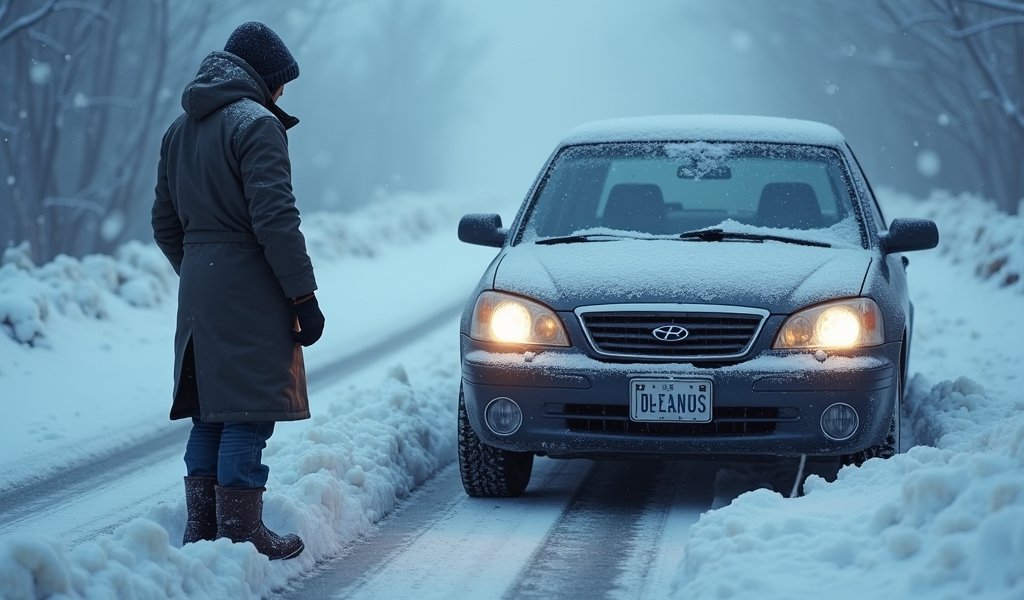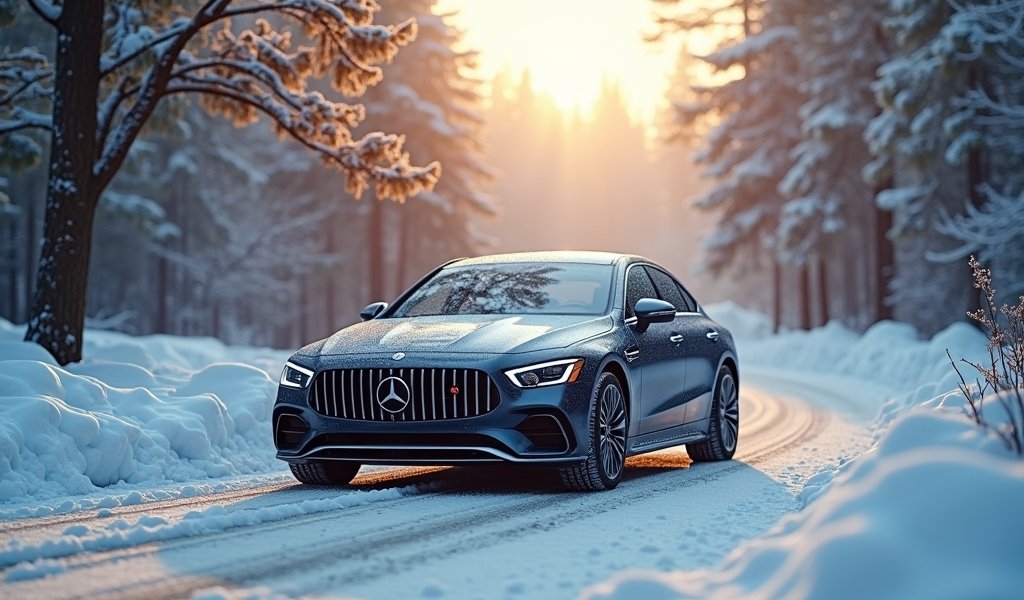Overview
This article presents a nine-point winter car maintenance checklist that includes battery health checks, tire preparation, fluid level monitoring, wiper blade replacement, heating system inspection, emergency kit preparation, battery cable maintenance, exterior protection, and fuel system considerations. The guide emphasizes that proper winter vehicle maintenance is essential for safety, reliability, and preventing costly repairs during cold weather conditions.
Table of Contents
- Who We Are: Your Trusted Car Maintenance Partners
- Understanding Winter Challenges for Your Vehicle
- 1. Battery Health Check: Power When You Need It Most
- 2. Tire Preparation: Maintaining Grip on Icy Roads
- 3. Checking Fluid Levels: The Lifeblood of Your Vehicle
- 4. Wiper Blades and Visibility Maintenance
- 5. Heating System Inspection: Comfort and Safety
- 6. Winter Emergency Kit: Be Prepared for Anything
- 7. Battery Cables and Connections Check
- 8. Exterior Protection: Preventing Rust and Damage
- 9. Fuel System Considerations for Cold Weather
- Conclusion: Drive Safely This Winter
- Frequently Asked Questions
Who We Are: Your Trusted Car Maintenance Partners
When it comes to vehicles, we believe every owner deserves to be a “know-it-all” – especially when preparing for winter’s unique challenges. Our team of certified mechanics and automotive specialists has created this comprehensive winter car maintenance checklist to guide you through the season’s potential hazards. With over 30 years of combined experience in cold-weather vehicle maintenance, we’ve seen firsthand what happens when cars aren’t properly winterized. Let us help you avoid those costly mistakes and keep your vehicle running smoothly even when the mercury drops.
Winter doesn’t have to mean car trouble. With the right preparation and knowledge, you can confidently navigate through snow, ice, and freezing temperatures. Our expert advice is designed to make winter car care accessible to everyone – whether you’re a seasoned gearhead or someone who just wants their vehicle to start reliably on cold mornings.
Understanding Winter Challenges for Your Vehicle
Winter throws a unique set of obstacles at your trusty vehicle. Cold temperatures thicken your engine oil, making it harder for your engine to turn over. Battery capacity can drop by up to 50% when temperatures hit freezing, and road salt creates a corrosive environment for your car’s undercarriage. Meanwhile, snow and ice demand more from your tires and braking system than any other season.
These challenges aren’t meant to scare you – they’re just reality. The good news? A proper winter maintenance routine addresses each of these concerns methodically. Following our nine-point checklist will dramatically reduce your chances of experiencing winter-related vehicle troubles. Let’s dive into what really matters when preparing your car for the cold season.

1. Battery Health Check: Power When You Need It Most
Your car’s battery works harder in winter than any other time of year. Cold temperatures reduce battery capacity while simultaneously increasing the power needed to start your engine. This double-whammy is why so many drivers find themselves stranded with dead batteries during cold snaps.
Start by checking your battery’s age – most batteries last 3-5 years, but extreme temperatures can shorten this lifespan. If yours is approaching the end of its expected life, consider proactive replacement before winter fully sets in. Next, inspect battery terminals for corrosion, which appears as a white or bluish powder. Clean terminals with a wire brush and a solution of baking soda and water to ensure proper electrical connection.
For a more thorough assessment, have your battery load-tested at a local auto parts store or repair shop. This test measures your battery’s ability to hold voltage under load – exactly what it needs to do on a cold morning. According to research from the National Highway Traffic Safety Administration, battery failures account for nearly half of winter vehicle breakdowns, making this check perhaps the most crucial on our list.
2. Tire Preparation: Maintaining Grip on Icy Roads
Winter driving demands maximum traction, and your tires are your only contact point with the road. If you live in an area with regular snowfall, consider investing in dedicated winter tires. Unlike all-seasons, winter tires use specialized rubber compounds that stay flexible in cold temperatures and feature tread patterns specifically designed to grip snow and ice.
For those in milder climates, ensure your all-season tires have adequate tread depth – at least 3/32 of an inch. The old penny test works well: insert a penny upside down into your tire tread; if you can see the top of Lincoln’s head, it’s time for new tires. Also check tire pressure weekly during winter, as pressure drops approximately 1 PSI for every 10°F decrease in temperature.
Don’t forget to check your spare tire too. There’s nothing worse than having a flat in a snowstorm only to discover your spare is also flat. Additionally, consider carrying traction aids like sand, cat litter, or purpose-made traction mats in your trunk for emergency situations when you might get stuck.
3. Checking Fluid Levels: The Lifeblood of Your Vehicle
Winter demands special attention to your vehicle’s fluids, starting with engine oil. Cold temperatures cause oil to thicken, potentially creating resistance that makes your engine harder to start. If you’re due for an oil change before winter, consider switching to a lower viscosity oil as recommended in your owner’s manual for cold weather operation.
Antifreeze is obviously crucial – it prevents your engine from freezing in low temperatures and helps maintain optimal operating temperature. Check not just the level but also the condition and freezing point of your coolant. A simple test kit from any auto parts store can tell you if your antifreeze will protect down to the temperatures you expect in your area.
Other fluids needing attention include:
- Brake fluid – ensure it’s clean and at the proper level
- Power steering fluid – check for proper level and condition
- Transmission fluid – verify level and condition according to manufacturer specifications
- Windshield washer fluid – replace with winter-grade fluid rated for the lowest temperatures in your region
Proper fluid maintenance is one of the most effective ways to winterize your car and prevent cold-weather breakdowns. Remember, fluids are the lifeblood of your vehicle’s systems, and their condition becomes even more critical when temperatures plummet.
4. Wiper Blades and Visibility Maintenance
Winter driving demands crystal-clear visibility, yet it’s precisely when road spray, slush, and snow conspire to blind you. Wiper blades that worked fine in summer may fail completely against winter’s challenges. Rubber wiper elements harden and crack in cold weather, leaving dangerous streaks across your windshield exactly when you need clear vision most.
Replace your wiper blades with winter-specific models before the first snowfall. These specialized blades feature a robust rubber shell that prevents ice and snow buildup. While they cost slightly more than standard blades, the improved visibility during winter storms is well worth the investment. Most wiper manufacturers recommend replacement every six months, so timing this change for late autumn makes perfect sense.
Don’t forget to check your windshield washer fluid reservoir and top it off with winter-grade fluid rated for the coldest temperatures in your area. Standard summer washer fluid can freeze in your lines, rendering your washers useless and potentially causing damage. Some mechanics also recommend treating your windshield with a water-repellent coating to improve visibility during winter precipitation.
5. Heating System Inspection: Comfort and Safety
Your vehicle’s heating system isn’t just about comfort—it’s a critical safety feature. In winter, your heater keeps windows defrosted and provides life-saving warmth in emergency situations. A properly functioning heating system starts with checking your coolant level and condition, as the same fluid cooling your engine in summer warms your cabin in winter.
Test all components of your climate control system, including:
- Heater output at various settings
- Blower motor function at all speeds
- Proper operation of directional vents
- Functioning of rear and side window defrosters
- Thermostat operation (a stuck thermostat can prevent proper heating)
If you notice weak airflow, inconsistent heating, or strange odors when using your heater, have the system inspected by a professional. These symptoms could indicate a clogged heater core or other issues that are much better addressed before you’re shivering in a snowstorm. According to AAA’s automotive experts, heating system failures rank among the top five winter-related service calls they receive.

6. Winter Emergency Kit: Be Prepared for Anything
Even with perfect maintenance, winter conditions can leave you stranded. Smart drivers prepare for this possibility with a well-stocked emergency kit. Your winter survival kit should include items that provide warmth, visibility, and the means to get moving again if possible.
Essential items for your winter emergency kit include:
- Warm blankets or sleeping bag
- Extra warm clothing, including hats, gloves, and boots
- High-energy, non-perishable snacks
- Water (in containers that won’t burst when frozen)
- First-aid kit with any necessary personal medications
- Flashlight with extra batteries
- Portable phone charger or power bank
- Ice scraper and snow brush
- Small folding shovel
- Traction aids (sand, cat litter, or commercial products)
- Jump starter or jumper cables
- Road flares or reflective triangles
Store these items in a durable, waterproof container in your trunk or cargo area where they’ll be accessible even if you slide into a ditch. While this list might seem extensive, experienced winter drivers understand that these items can make the difference between a minor inconvenience and a dangerous emergency. Remember, winter storms can leave you stranded for hours – or even overnight in rural areas – so preparing for extended waits is simply prudent.
7. Battery Cables and Connections Check
We’ve already discussed battery health, but the connections delivering power from that battery deserve their own attention. Corroded or loose battery cables can prevent your vehicle from starting even when the battery itself is perfectly good. These connections become especially vulnerable in winter when temperature fluctuations can cause metal to contract and expand, potentially loosening critical connections.
Inspect both the positive and negative terminals where cables connect to your battery. Look for corrosion (a white or greenish powdery substance), frayed cables, or loose connections. Clean corrosion using a wire brush and a solution of baking soda and water, then rinse with clean water and dry thoroughly. Ensure terminal clamps are tight – but not overtightened, which can damage battery posts.
Don’t overlook the ground connection where the negative battery cable connects to your vehicle’s frame or engine block. This connection is often forgotten but can develop corrosion or become loose over time. A poor ground connection can cause starting problems, electrical system issues, and even damage to sensitive electronic components.
8. Exterior Protection: Preventing Rust and Damage
Winter’s combination of road salt, slush, and moisture creates the perfect environment for corrosion. Protecting your vehicle’s exterior isn’t just about maintaining its appearance – it’s about preserving its structural integrity and resale value. A thorough pre-winter detailing with emphasis on protective treatments pays dividends long after spring arrives.
Start with a complete wash, paying special attention to wheel wells and the undercarriage where salt and road grime accumulate. Apply a quality wax to all painted surfaces – this creates a barrier between your paint and the harsh winter elements. Some detailers recommend a ceramic coating for maximum protection, though this is a more significant investment.
For those in heavy salt-use areas, consider an annual undercarriage treatment. These specialized coatings help protect vulnerable components from salt corrosion. Throughout winter, try to wash your vehicle regularly during warmer days (above freezing), focusing on removing accumulated salt. When washing isn’t possible, drive through standing water (like puddles) occasionally to help rinse away salt from undercarriage components.
Don’t forget to lubricate door locks, hood latches, and weather seals with appropriate products to prevent freezing and premature deterioration. A silicone-based protectant on rubber seals helps prevent doors from freezing shut during temperature fluctuations.
9. Fuel System Considerations for Cold Weather
Your vehicle’s fuel system faces unique challenges in winter. Cold temperatures can cause water vapor in your fuel tank to condense and potentially freeze in fuel lines. Additionally, diesel fuel can gel in extremely cold temperatures, making it impossible for your engine to run. Taking proactive steps with your fuel system can prevent these issues before they leave you stranded.
For all vehicles, try to keep your fuel tank at least half-full during winter. This reduces the amount of empty space where condensation can form and provides extra fuel weight for improved traction. Consider adding a fuel system anti-freeze or water remover product to your tank monthly during winter, especially if you experience large temperature swings.
Diesel vehicle owners face additional concerns. If you drive a diesel, familiarize yourself with the cold weather properties of your fuel. Consider using a winter-blend diesel fuel or appropriate anti-gel additives when temperatures drop below your fuel’s cloud point (typically around 32°F for standard diesel). Some diesel owners also benefit from block heaters or fuel heaters in extremely cold climates.
Maintaining clean fuel injectors and filters becomes especially important in winter. If it’s been more than two years since your last fuel filter change, consider replacement before winter sets in. A comprehensive winter car maintenance guide should always include attention to your fuel system to prevent cold-weather starting issues.
Conclusion: Drive Safely This Winter
Winter driving doesn’t have to be stressful or dangerous. By methodically working through this winter car maintenance checklist, you’ve taken significant steps toward ensuring your vehicle remains reliable, safe, and efficient during the coldest months. Remember that prevention is always less expensive and less stressful than roadside repairs in freezing weather.
The few hours you invest in winterizing your vehicle can save you days of inconvenience and hundreds (or thousands) in repair costs. More importantly, proper winter maintenance helps keep you and your passengers safe when road conditions are at their worst. Weather may be unpredictable, but your vehicle’s performance doesn’t have to be.
As automotive professionals who genuinely care about your driving experience, we encourage you to use this checklist as your winter preparation guide. Whether you’re performing these checks yourself or working with a trusted mechanic, staying proactive about winter car care will pay dividends throughout the season. Safe travels, and remember – we’re here to help you become a “know-it-all” car owner ready for whatever winter brings!
Frequently Asked Questions
How often should I check my tire pressure in winter?
Check tire pressure at least once a week during winter months. Tire pressure typically drops 1-2 PSI for every 10°F decrease in temperature.
Is it necessary to warm up my car before driving in cold weather?
Modern vehicles only need about 30 seconds of warm-up time before gentle driving. Excessive idling wastes fuel and creates unnecessary emissions.
When should I switch to winter tires?
Install winter tires when temperatures consistently drop below 45°F (7°C). The rubber compounds in all-season tires harden and lose traction below this temperature.
How can I prevent my car doors from freezing shut?
Apply a silicone-based lubricant to door seals and locks before freezing weather arrives. You can also cover the car or park in a garage when possible.
What should I do if my vehicle gets stuck in snow?
Clear snow from around tires and place traction materials (sand, cat litter, floor mats) under drive wheels. Rock the vehicle gently between drive and reverse to create momentum without spinning tires excessively.


Pingback: Best Windshield Washer Fluid for Winter! - knowsyourcar.com
Pingback: Winter Car Maintenance Checklist 5 Tips - knowsyourcar.com